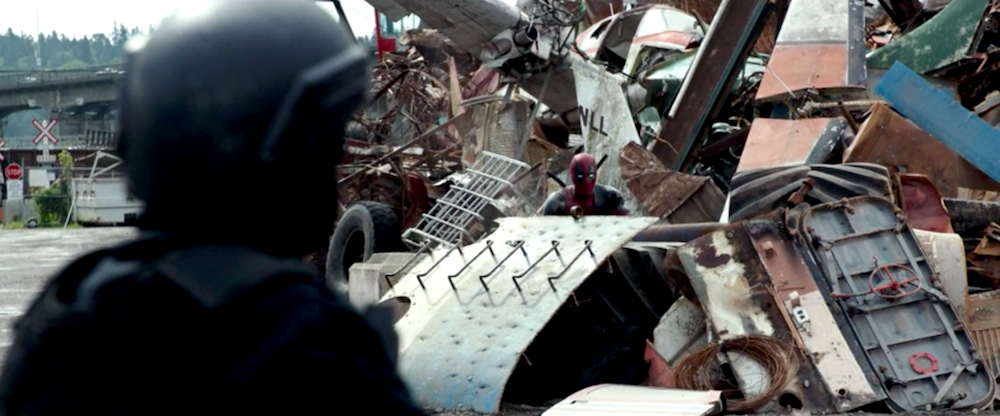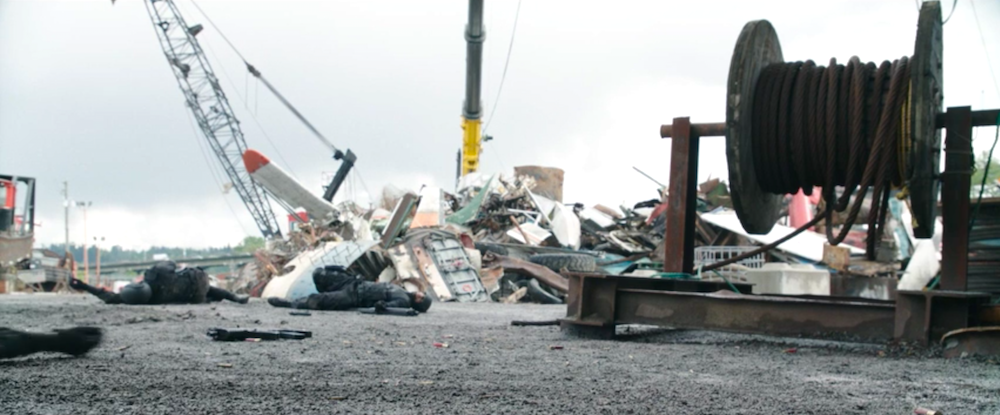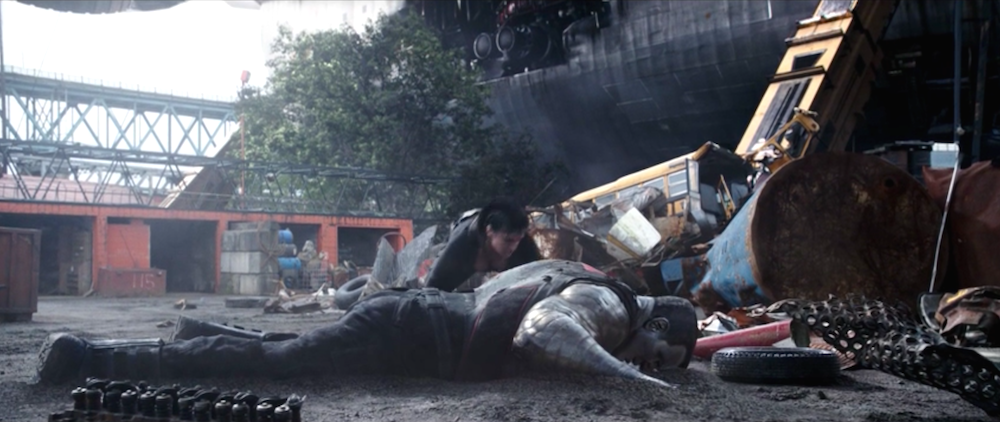The Furniture: Deadpool's Junk
 Monday, May 16, 2016 at 11:05AM
Monday, May 16, 2016 at 11:05AM "The Furniture" is our weekly series on Production Design. Here's Daniel Walber on Deadpool, now available on DVD and Bluray

We tend to think of superhero movies as showcases for visual effects. Marvel, for example, has always been stuck in that one particular category at the Oscars. It can be hard to untangle CGI from physical sets, particularly when they're strung together by a deft editor. And if identifying individual elements can be difficult, assigning credit often seems even harder. As such, production design isn’t usually at the forefront of our constant national conversation around the Marvel Cinematic Universe.
Yet sometimes, even in the murky waters of big budget spectacle, the physical set outshines its digital embellishment. That’s certainly the case in Deadpool, a superhero action movie that was perhaps forced into more terrestrial creativity by its low budget of $58 million. For context, Captain America: Civil War cost about $250 million. Inevitably some of the film looks a bit cheap, particularly when it comes to the CG. Despite the low budget, the studio still clearly felt some pressure to put on the same bombastic show of digital force that comes at the end of every one of these movies. It's a bummer, frankly, because the physical set could easily have stood on its own.
This final clash between Deadpool (Ryan Reynolds) and Francis (Ed Skrein) takes place at a vast junkyard. [more...]
The first thing we notice is that it looks a whole lot like a helicarrier from the climactic sequence of various Avengers movies. It’s also an enormous digital image, as if Deadpool and his allies have arrived in front of an enormous television screen playing the depressing epilogue of another Marvel movie.
However, things get interesting after they’ve stepped through the gate. The basic location was an actual junkyard in Vancouver. Production designer Sean Haworth kept much of the original stuff they found laying around. Then the team added piles of old military paraphernalia. The decrepit airplane is probably the most eye-catching piece.


The rest of the military objects are more subtle, but just as uncanny. Notice the door on the right side of this shot, which looks as if it were ripped out of the inside of an enormous submarine.
Junkyards are inherently uncanny places, where trashed objects and vehicles warp our sense of place and time. The old cars and weapons are from different decades, evoking a confused history with no real specificity. There are also much less specific signifiers. Take this eye-catchingly large spool, for example. I’m sure it has some sort of mechanical purpose, but that’s not apparent to the uninitiated. To most of us, it’s just a really big spool.

There’s also a torn apart schoolbus sticking up from a particularly cluttered pile of metal. No matter how rational it is that these vehicles sometimes break down and need to be trashed, the image of a bright yellow bus outside of its proper context will always strike a weird chord. It lends the junkyard an anarchic charm, like the City Museum in St. Louis but with much more violence and profanity.
Unfortunately, this physical location wasn’t deemed exciting enough. The helicarrier has to tip over, threatening everyone’s lives and giving the CG team a great excuse for a barrage of weightless objects. It quickly overwhelms the set. The temptation to wow the audience with digitally-rendered spaces wins out, even with the low budget. The last shot, even with Deadpool making fun of its apparent grandeur, still doesn’t really work. It all looks too fake, too composed. It’s a reminder that, while CG and physical locations often mesh quite well, balance requires confidence in both sides of the equation. If you’re going to construct a great set, give it an equal share of the spotlight.

Previously on "The Furniture": Joy's Emerald City of Home Shopping
Related Reading: On Deadpool's overhyped sexuality




Reader Comments (1)
Cool write up. Yeah, they still had to put CG all over it in the end, but I like you picking out the details in the junk yard.
Definitely one of the things I admired of the film after I saw it was learning just how much they had to think creatively through things due to their lower budget like Deadpool forgetting his bag of guns or them nixing a big motorcycle chase.